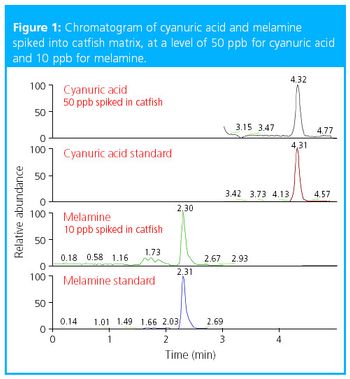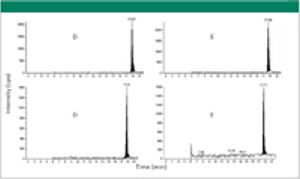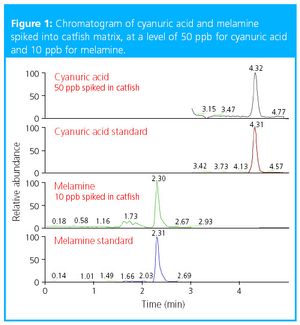Articles by Dipankar Ghosh

The quantitative performance of the latest generation of high-resolution instruments is comparable to that of a triple quadrupole MS, even though different scanning modes are used. Higher-resolution instrumentation also allows flexibility concerning compound identification because the experiment can be set up for targeted quantitation, screening, or both. In an Orbitrap-based instrument, the parallel reaction monitoring (PRM) mode performs most closely to a triple quadrupole mass analyzer using selected reaction monitoring (SRM) mode. This study looks at the performance of an Orbitrap-based LC–MS method for EPA Method 539.

The screening of pesticides, mycotoxins, and veterinary drugs is of great importance in regulated environments such as food or feed analysis. Due to some of the limitations of traditional triple quadrupole approaches (for example, targeted analyte detection, limited number of compounds, and unidentified unknown compounds), there is currently a trend towards use of full-scan MS data for the analysis of residue samples. Current screening approaches mainly rely on the use of ToF instruments coupled to U-HPLC delivering mass accuracy (~5 ppm) at a maximum resolution of <15,000. This can produce inaccurate mass measurements due the presence of unresolved background matrix interferences. In this work we show a full-scan MS screening approach with the Thermo Scientific Exactive mass spectrometer, a novel single-stage Orbitrapâ„¢ MS capable of providing precise mass accuracies at resolutions of up to 100,000 without the need for internal mass calibration.

The authors discuss the use of high-resolution LC-MS to analyze complex samples in regulated environments such as food and animal-feed analysis.

The analysis of chemical residues in food requires techniques sensitive enough to detect and quantify contaminants at or below the maximum residue limit (MRL) of the compound in a given sample matrix. Because of increased food safety regulations and the growing numbers of samples to be analyzed, it is critical that the analytical techniques provide high sample throughput.

In March 2007, several North American manufacturers of pet food voluntarily issued nationwide recall notices for some of their products that were reportedly associated with renal failure in pets. The raw material wheat gluten, used to manufacture the pet food, was imported from China and was identified as the source of contamination.

In March 2007, several North American manufacturers of pet food voluntarily issued nationwide recall notices for some of their products that were reportedly associated with renal failure in pets. The raw material wheat gluten, used to manufacture the pet food, was imported from China and was identified as the source of contamination.

In March 2007, several North American manufacturers of pet food voluntarily issued nationwide recall notices for some of their products that were reportedly associated with renal failure in pets. The raw material wheat gluten, used to manufacture the pet food, was imported from China and was identified as the source of contamination.














